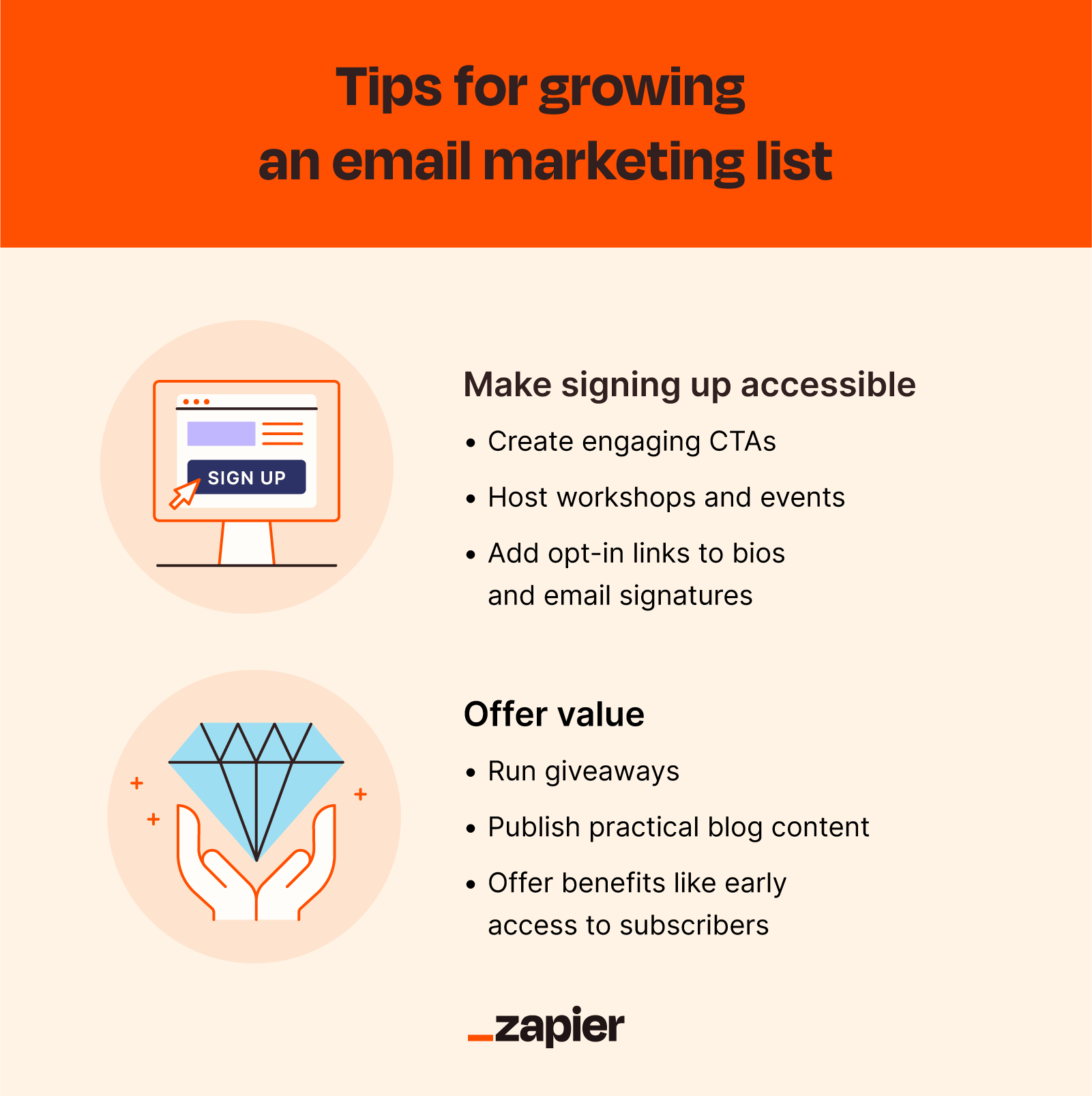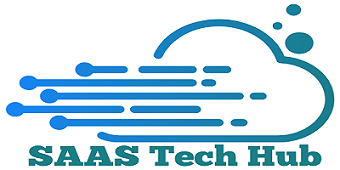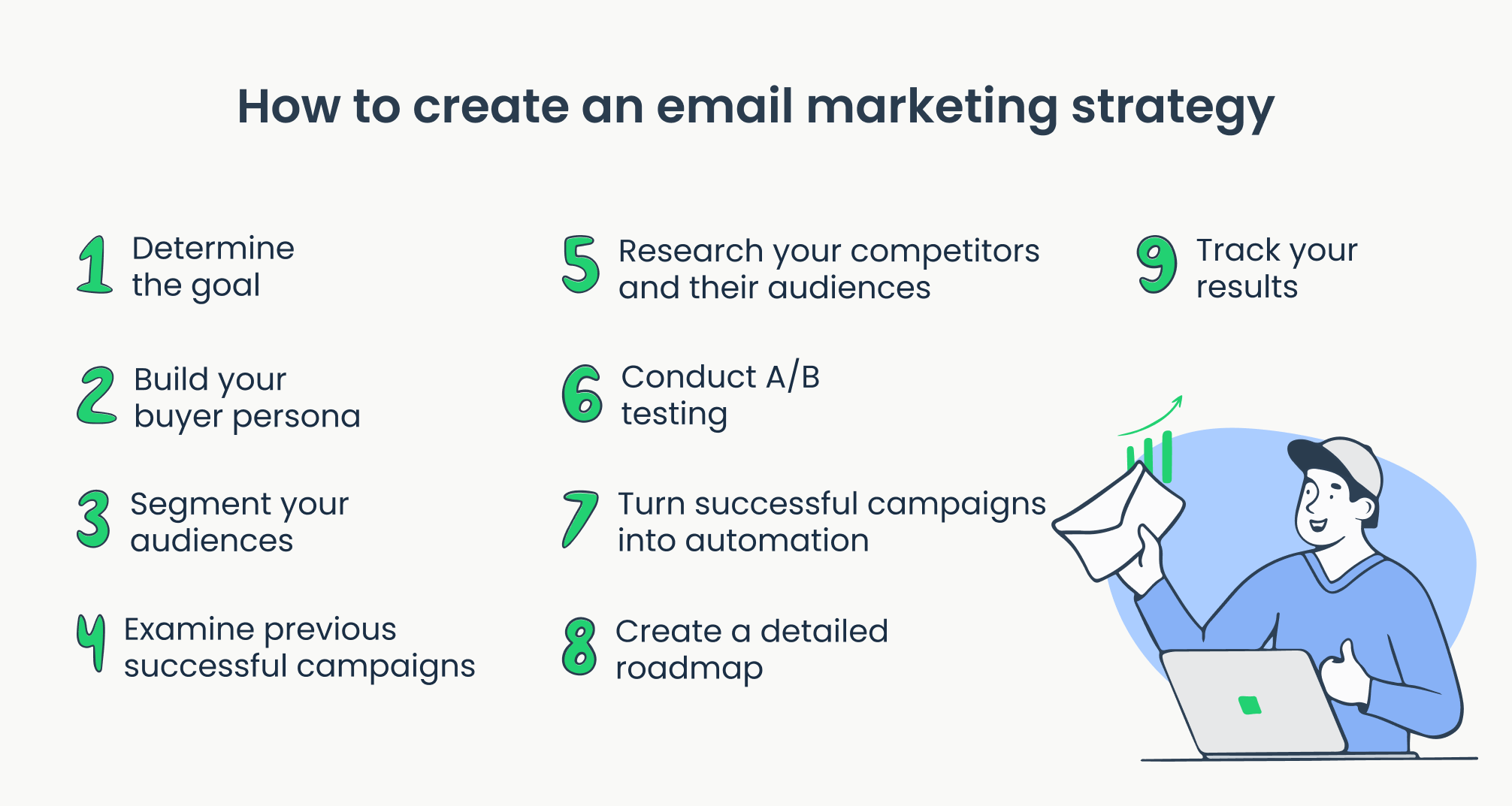Building a marketing email can be simple and effective. You need the right approach and tools.
Email marketing is a powerful way to reach your audience. It helps in promoting products, sharing news, and engaging customers. Whether you’re a beginner or looking to refine your skills, knowing how to craft a compelling marketing email is essential.
In this guide, we will walk you through the steps to create an email that grabs attention and drives action. We will cover the basics and share tips to make your emails stand out. With these strategies, you will learn to connect with your audience and achieve your marketing goals. Ready to start? Let’s dive in!
Crafting A Compelling Subject Line
A well-crafted subject line is crucial for the success of your marketing email. It’s the first thing your recipients see, and it determines whether they will open your email or not. Therefore, it is essential to make your subject line engaging and relevant. Below are some strategies to help you create a compelling subject line for your marketing emails.
Keeping It Short And Sweet
A short subject line is more likely to capture attention. Aim for fewer than 50 characters. This ensures it displays well on mobile devices. Short subject lines are also easier to read quickly.
Here are some tips for keeping it short:
- Use strong verbs to convey action.
- Avoid unnecessary words.
- Get to the point quickly.
For example:
| Not Ideal | Improved |
|---|---|
| Discover our new summer collection with amazing discounts | Summer deals await! |
| Check out these exciting features in our latest update | New features inside! |
Using Personalization
Personalization can make your subject line more engaging. It shows the recipient that the email is tailored for them. This can increase the open rate significantly.
Ways to personalize your subject line:
- Include the recipient’s name.
- Reference their recent activity or interests.
- Use location-specific information.
For example:
| Not Ideal | Improved |
|---|---|
| Don’t miss our upcoming sale! | John, your sale starts now! |
| Explore new arrivals in our store | Jane, check out new arrivals! |
By keeping your subject line short and personalizing it, you can greatly improve your email marketing efforts. These strategies help make your emails more appealing and increase the chances of them being opened.
Writing Engaging Preheaders
Writing engaging preheaders can significantly boost your email open rates. A preheader is the text that follows your subject line. It gives a sneak peek into the email content. This small snippet can entice recipients to open your email. Let’s explore how to craft compelling preheaders.
Complementing The Subject Line
Your preheader should complement your subject line. Think of them as a team. They work together to grab attention. If your subject line is catchy, your preheader should add more value. It should not repeat the subject line. Instead, it should provide extra information.
For example, if your subject line is “Exclusive Offer Inside,” your preheader can be “20% off for the next 24 hours.” This gives more context to the subject line. It makes the reader curious. They are more likely to open the email.
Adding A Call To Action
A preheader can also include a call to action (CTA). A CTA encourages the reader to take a specific action. This could be clicking a link, reading more, or making a purchase. A good CTA in the preheader can drive engagement.
For instance, “Don’t miss out, shop now!” is a simple CTA. It tells the reader what to do next. It creates a sense of urgency. This can lead to higher click-through rates.
Remember, your preheader is a valuable tool. Use it wisely to enhance your email marketing efforts.
Designing Email Layout
Creating a successful marketing email requires a well-thought-out design. The layout of your email plays a crucial role in capturing attention and conveying your message effectively. Let’s explore how to design an engaging email layout.
Choosing The Right Template
Choosing a suitable template is the first step in designing your email layout. Look for templates that align with your brand’s aesthetics. Ensure the template is responsive, so it looks good on all devices. A well-chosen template saves time and ensures consistency in your emails.
| Template Type | Best For |
|---|---|
| Single Column | Simple and direct messages |
| Two Column | Balanced text and images |
| Newsletter | Regular updates and multiple sections |
Balancing Text And Images
Balancing text and images is essential for a visually appealing email. Text provides information, while images grab attention. Use high-quality images to support your message. Avoid overcrowding your email with too many images or too much text.
- Text: Keep sentences short and to the point.
- Images: Use relevant images to enhance understanding.
Here is a simple code snippet to illustrate a balanced layout:
Engaging headline here
Short, informative text here.

Remember to use alt text for images. This improves accessibility and SEO. Effective email design keeps your audience engaged and your message clear.
Creating Effective Content
Creating effective content is crucial for a successful marketing email. Your email must stand out in crowded inboxes. This involves crafting messages that capture attention and keep readers engaged. Let’s explore two key strategies: focusing on benefits and incorporating storytelling.
Focusing On Benefits
Highlighting benefits captures your reader’s interest quickly. Instead of listing features, show how your product solves their problems. For example, instead of saying, “Our software has a new interface,” say, “Save time with our easy-to-use interface.” Benefits speak directly to your reader’s needs.
Use clear, concise language. Avoid jargon or complex terms. Make the benefits obvious. This helps readers see the value you offer. They will be more likely to engage with your email.
Incorporating Storytelling
Storytelling makes your email more relatable. People connect with stories. Start with a personal anecdote or a customer success story. This draws readers in and keeps them interested.
Make the story relevant to your message. Ensure it highlights the benefits of your product or service. This approach humanizes your brand. It builds a connection with your readers. They will feel more inclined to trust and follow your call to action.
Keep your stories short and to the point. Use vivid but simple language. Ensure your message remains clear and engaging throughout.
Using Strong Calls To Action
Using strong calls to action (CTAs) in your marketing emails is key. They guide your readers to take the next step. A well-crafted CTA can increase your email’s effectiveness. In this section, we’ll discuss how to make your CTAs stand out and use action-oriented language.
Making Ctas Stand Out
CTAs should grab attention. Place them in a prominent spot. Use contrasting colors to make them pop. Make sure the text is bold and easy to read. Use buttons instead of links. Buttons draw more attention and are easier to click.
Keep the design simple. Avoid clutter around your CTA. Too many elements can distract the reader. Ensure there is enough white space. This makes your CTA more noticeable. Test different designs to see what works best. A/B testing can help you find the most effective style.
Using Action-oriented Language
Your CTA text should be action-oriented. Use verbs that encourage immediate action. Words like “buy,” “download,” and “subscribe” work well. Make your message clear and direct. Avoid vague phrases like “click here.”
Be specific about the benefit. Tell the reader what they will get. For example, “Get your free ebook” is more effective than “Learn more.” Personalize your CTA if possible. Use the reader’s name or address their needs. This creates a sense of urgency and relevance.
Keep your CTAs short. A few words are enough. Long CTAs can confuse the reader. Make sure the language is simple and easy to understand. Avoid jargon or complex terms. The goal is to make the next step clear and easy.

Credit: www.pgrmt.com
Personalizing Your Emails
Personalizing your marketing emails can greatly improve engagement. People love receiving emails that speak directly to them. It makes them feel valued and understood. Personalization can lead to higher open rates and better click-through rates.
But how do you personalize emails effectively? The key lies in understanding your audience and tailoring your content to their needs. Let’s explore some strategies to achieve this.
Segmenting Your Audience
Segmentation is essential for personalizing your emails. It means dividing your email list into smaller groups. Each group should share common characteristics. These characteristics can include age, location, behavior, and interests. By segmenting your audience, you can send more relevant content to each group.
For example, you can send special offers to customers who have made recent purchases. Or, you can share educational content with new subscribers. This approach makes your emails more appealing and useful to each recipient.
Using Dynamic Content
Dynamic content allows you to change parts of your email based on the recipient’s data. It can include their name, location, or past behavior. This makes your emails feel more personal and relevant. For instance, you can greet each recipient by their first name.
You can also show different products to different segments. If someone often buys sports gear, highlight new arrivals in that category. This level of personalization can increase engagement and conversion rates.
By using these strategies, you can create marketing emails that resonate with your audience. Personalized emails show that you care about your customers. They help build stronger relationships and drive better results.
Optimizing For Mobile
Optimizing your marketing emails for mobile is essential. More people check emails on their phones. If your email looks bad on mobile, people will delete it. Let’s look at some tips to make sure your emails shine on every device.
Responsive Design Tips
Responsive design helps your email look good on all screens. Here are some key tips:
- Use a single column layout. It’s easier to read on small screens.
- Use large fonts. Small text is hard to read on mobile. Aim for at least 14px.
- Keep images small. Large images take longer to load. Use images that are 600px wide or less.
- Use buttons, not links. Buttons are easier to tap on a touch screen. Make sure buttons are at least 44px tall.
- Shorten your subject lines. Mobile screens show fewer characters. Aim for 30 characters or less.
Testing Across Devices
Testing ensures your email works well everywhere. Here are steps to test your emails:
- Use email testing tools like Litmus or Email on Acid. These tools show how your email looks on different devices.
- Send test emails to yourself. Check them on your own phone, tablet, and computer.
- Ask friends or colleagues to check the email on their devices. They might spot issues you missed.
- Check for broken links. Make sure all links work and lead to the right pages.
By following these steps, you can ensure your marketing emails look great on any device.

Credit: tapfiliate.com
Analyzing Email Performance
Analyzing email performance is crucial to improve your marketing strategy. By understanding how your emails perform, you can make informed decisions. This ensures better engagement and higher conversion rates.
Key Metrics To Track
Tracking key metrics helps in evaluating email effectiveness. The most important metrics include open rate, click-through rate, and conversion rate. Open rate shows how many people opened your email. Click-through rate indicates how many clicked on links within the email. Conversion rate measures how many recipients completed a desired action.
Another vital metric is the bounce rate. This tells you how many emails were not delivered. A high bounce rate might indicate issues with your email list. Monitoring unsubscribe rate is also essential. It helps you understand if your content is relevant to your audience.
Using A/b Testing
A/B testing involves sending two versions of an email to a small group. This helps determine which version performs better. You can test different elements, such as subject lines, email content, or call-to-action buttons.
To perform A/B testing, create two versions of your email. Send version A to one half of your test group and version B to the other half. Analyze the results to see which version had better engagement. Use the winning version for the rest of your email list.
Regular A/B testing can improve your email campaigns. It allows you to find what resonates best with your audience. This results in higher engagement and better performance.

Credit: zapier.com
Frequently Asked Questions
What Are The Key Components Of A Marketing Email?
A marketing email should include a compelling subject line, personalized content, a clear call-to-action, and an appealing design. These elements help engage your audience and drive conversions.
How Do I Write A Catchy Subject Line?
To write a catchy subject line, keep it short, use action words, and create a sense of urgency. Personalization can also increase open rates.
What Should Be Included In The Email Body?
The email body should include personalized content, valuable information, and a clear call-to-action. Visuals and concise text make the email more engaging.
How Important Is Personalization In Marketing Emails?
Personalization is crucial as it makes the email feel tailored to the recipient. This increases engagement and conversion rates.
Conclusion
Creating an effective marketing email is simple. Focus on clear, engaging content. Personalize the message to connect with your audience. Use a catchy subject line to grab attention. Keep the design clean and mobile-friendly. Test your email before sending it out.
Analyze your results and adjust your strategy. With these steps, you can build successful marketing emails that drive results. Happy emailing!



Leave a Reply